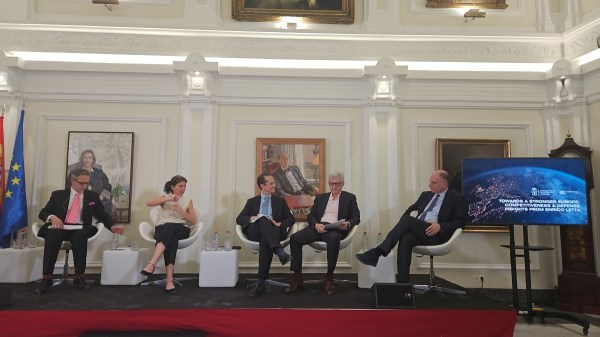A call for policy makers’ commitment and action.
Is there a more effective way to solve problems and overcome obstacles than collaboration? While the answer may vary from respondent to respondent, practice shows that cooperation is the sum of efforts that helps us achieve shared goals. Fostering innovation is an example and partnerships for boosting connectivity are no exception. This is one of the main conclusions of the report “Building an Open RAN ecosystem for Europe to lead in this essential innovation“.
Open RAN is the name used for the open interfaces infrastructure in the Radio Access Network that many mobile operators are developing in the O-RAN alliance . The aim is to enable that in 5G disaggregated networks the hardware and the software could be provided from different vendors.
The disaggregation of hardware and software has many advantages compared to integrated monolithic solutions, recognized by both operators and existing vendors. This disaggregation is called “network virtualization” and has been widely adopted as it makes it easy to upgrade capabilities or add new features to the network without having to install new hardware. Upgrades can be done overnight across the entire network. This speed contrasts with the weeks or months it takes to deploy a new feature using outdated monolithic solutions.
A strong commitment to interoperability
However, this virtualization does not mean that a new feature can be added to the network without vendor involvement or control. One might think that 4G and 5G are standards that should allow different vendors to interoperate with each other. In reality ,- and despite the fact that standards determine the tasks of each network function, what information must be exchanged through an interface and what the language might be – two different vendors speak different dialects, so they don’t understand each other, and consequently do not interoperate. It is funny that we talk about communication difficulties in a telecommunications sector environment, isn’t it?
Open RAN is the solution to this problem, as it defines a common and open set of interfaces (languages/dialects) to communicate between the different virtualized network functions. In this way, solutions from different vendors can understand each other and interoperate. In addition, this makes it possible that the network function of one vendor can be replaced by the same network function of another vendor. As a result, incorporating innovations from any other vendor will be very straightforward, which becomes the cornerstone for considering 5G networks as innovation platforms, one of the promises of this mobile generation.
But this is not unlike what happened years ago in the personal computer (the IT sector). The move from closed and proprietary solutions to open standards separated the hardware and software path and new companies and services flourished that skyrocketed the IT sector to what it is today. For this reason, Open RAN – as the first step in an open architecture philosophy – is the best way to emulate IT and accelerate the telecommunications sector to deliver the cutting-edge services demanded by the digital society.
An opportunity to keep Europe as network leader
Currently, Europe sits at the forefront of network vendors market and have an unpaired situation to lead this evolution on how networks are developed with open architectures. However, the willingness to do so is quite different: only network operators seem to have a strong position in favor of Open RAN. This forces us to rely on companies outside Europe for testing and first deployments.
Meanwhile, many countries around the world have identified Open RAN not only as an opportunity to improve their vendors diversity and secure their supply chains, but also to unleash a new wave of innovation “Over The Network”, incorporating new capabilities and leveraging synergies from the IT world. As a result, their governments are developing programmes to help their industries pioneer Open RAN, focusing on those sectors that play a key role in the Open RAN ecosystem.
No one disputes that open architectures are the future of networks. Not even critics of Open RAN do. However, the fact that challenges remain, such as that Open RAN performance may not be up to par, should not stop Europe. In fact, other regions have already launched their own Open RAN programmes to take the lead in the vendor landscape from Europe.
Europe’s telecoms industry is on a search for solutions
Telefónica, in a joint effort with Deutsche Telekom, Orange, Telecom Italia and Vodafone, has analyzed the Open RAN value chain and vendor landscape in Europe which identifies gaps and offers recommendations for policy makers in the following areas:
- Semiconductors
- RAN hardware
- RAN software
- Cloud
- System integration and testing services
- R&D labs, incubators, standards organizations, open source collaborations, etc.
Open RAN is a matter of when, not whether. Therefore, Europe must move now to maintain the current regional advantage in the vendor space. That will be crucial to lead the race among regions that have already started to compete.











